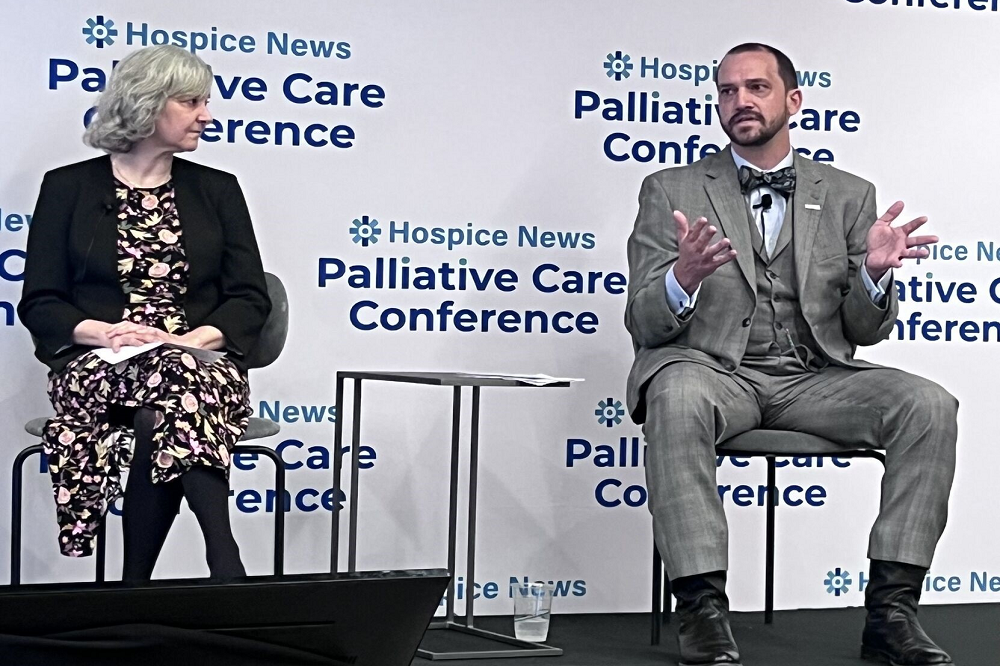
Although palliative care is growing in both the hospital and care at home settings, it is not clearly defined from a regulatory or payment perspective.
The Center for Medicare and Medicaid Innovation (CMMI) tests different payment and service delivery models that aim to achieve better care for patients and lower costs. Some of these payment models, such as those using accountable care organizations (ACOs) and Medicare Advantage (MA), provide an opportunity for palliative care providers to participate.
At the recent Hospice News Palliative Care Conference, Axxess Vice President of Professional Services Ryan Klaustermeier, MSN, RN, participated on a panel discussing opportunities for palliative care within CMMI programs.
Care Delivery and Reimbursement in CMMI Models
MA plans enable Medicare beneficiaries to get Medicare coverage through a private insurer that has a contract with Medicare. ACOs are groups of providers that serve Medicare beneficiaries.
ACOs may incorporate palliative care as a transitional model, such as transitioning a patient from the hospital to the home. Most ACOs are pursuing palliative care to reduce hospitalizations and emergency department use while improving the overall quality of care. Under MA plans, the practice of delivering palliative care typically follows the organization’s current practices but the referral pattern differs. Across all models, data that demonstrates patient outcomes is critical.
“As we start to look at different reimbursement models, especially in care at home, make sure you have the right technology and technology partners to accommodate the unique payment models that people are dreaming of,” Klaustermeier said. “You’ve got to be able to make those things actionable. … How do we actually collect this data, regurgitate that out so the payer is satisfied with what they’re getting, but then we get paid in return?”
Keys to Success in Value-Based Models
Participating in these payment models requires a certain amount of risk from the organization. Evaluating these elements of their program can help leaders determine if they’re ready to pursue a value-based model.
Performance on Quality and Efficiency Metrics
To fully participate in CMMI payment models, palliative care providers must be able to demonstrate high quality and efficient care metrics through data.
“The technology element is key – especially having the ability, with other technical vendors, to navigate the health information exchange,” Klaustermeier said. “Especially if you’re in the care at home [space], from the acute care records to home and back and forth and all of that exchange. It is possible, you just have to have the ability to do that.”
Investment Capital
Palliative care organizations also need to be able to provide an up-front financial investment in a new payment model. In ACO-driven models, the partnership members won’t know if the ACO has saved money until after a full year. Therefore, organizations may not see any financial gain for 13 to 16 months. They need to be able to handle that cash flow model.
“You have to have working capital and be prepared to financially invest to get this thing rolling,” Klaustermeier said. “It’s not a ‘Field of Dreams’ where you will build it and it will come. You have to be financially prepared and sound and have a foundation to move forward with these types of programs.”
Human Element
Providers must also consider whether their organization’s staff is prepared to handle an influx of patients and manage the different payment model for them. If an organization cannot take new patients, they won’t be providing a benefit to the model demonstration.
“From the human element, [you need] a healthy agency that can maintain the change management,” Klaustermeier said. “This is going to be new for an organization. It’s new things to learn, it’s additional responsibilities. You have to make sure that the health of your team is prepared to pursue something like this.”
Making Contracts With an ACO
When a palliative care provider initiates a contract with an ACO, it’s important for them to evaluate the ACO’s goals and objectives. The following questions can help palliative care organizations in their conversations with leaders and care managers:
- What are your pain points?
- What do you want palliative care to alleviate within your program?
- What diagnoses do your patients typically have?
- What family situations do your patients come from?
- How do you identify when patients are more appropriate for a different level of care, such as hospice?
- How have you made risk-sharing agreements with other providers outside of primary care?
“A firm understanding of what their objectives are and your ability to assess whether or not you can help them meet those objectives is really where you have to start,” Klaustermeier said. “The ability to have those skilled conversations and knowing what questions to ask is absolutely vital.”
Axxess Palliative Care, a cloud-based palliative care software, enables billing for Medicare Part B claims through Axxess’ direct connection to Medicare as a Network Service Vendor. As organizations expand the type of palliative care provided, the software is integrated with Axxess’ revenue cycle management solution to enable billing for all payers.
